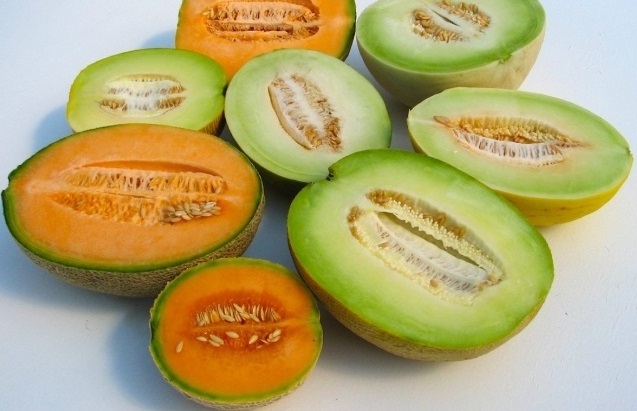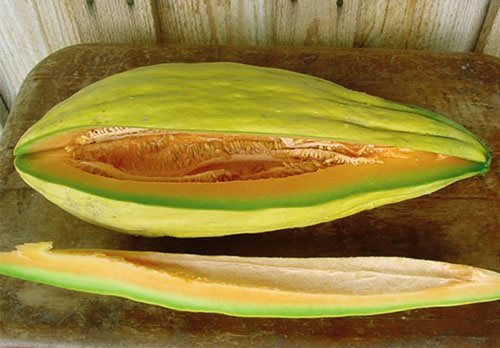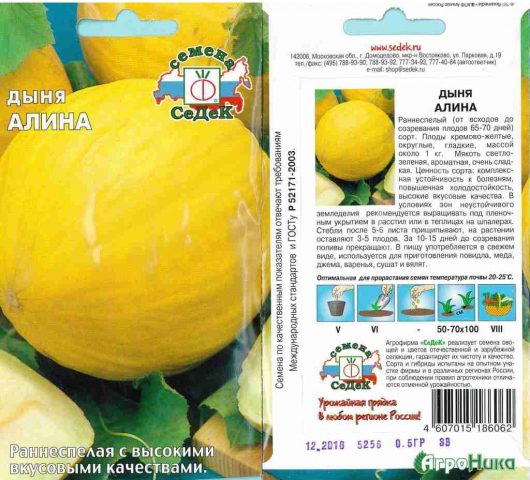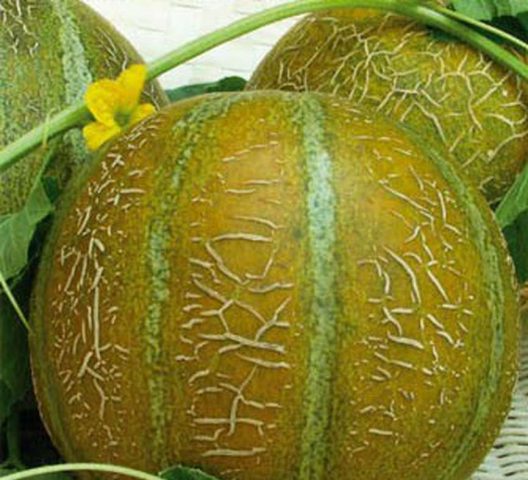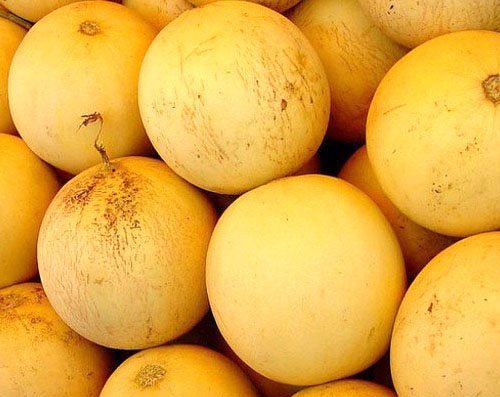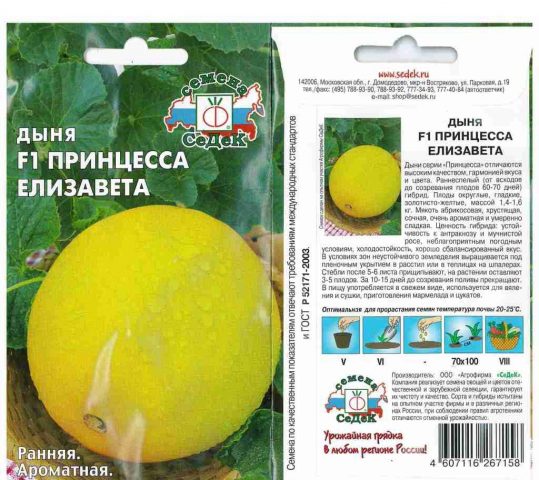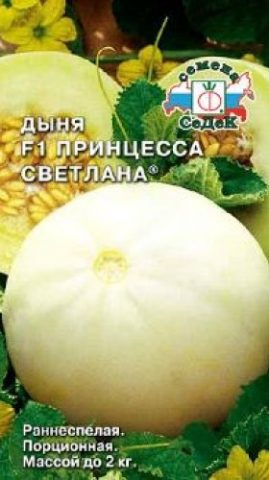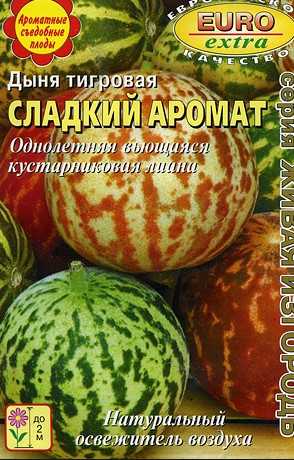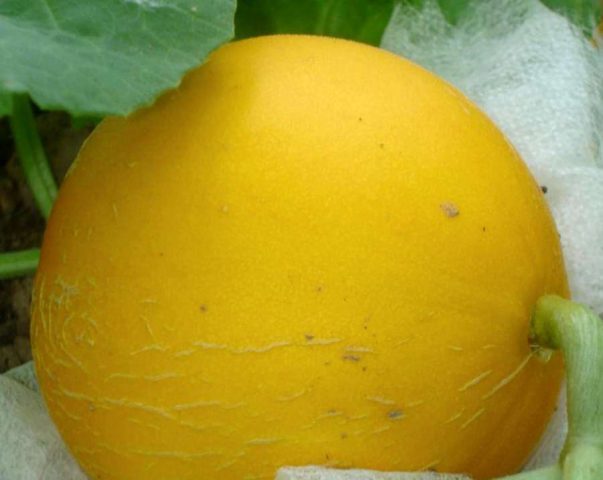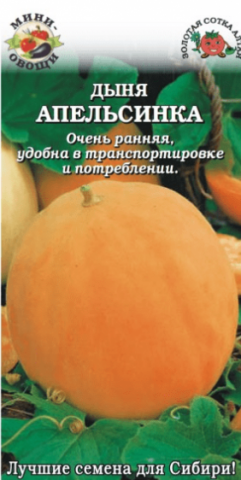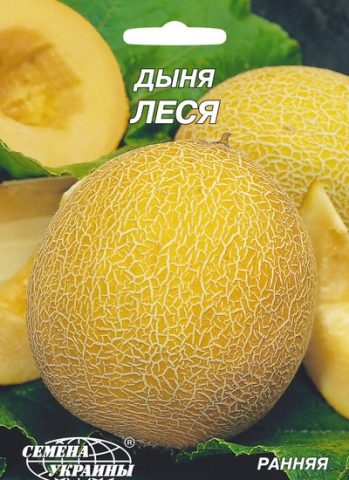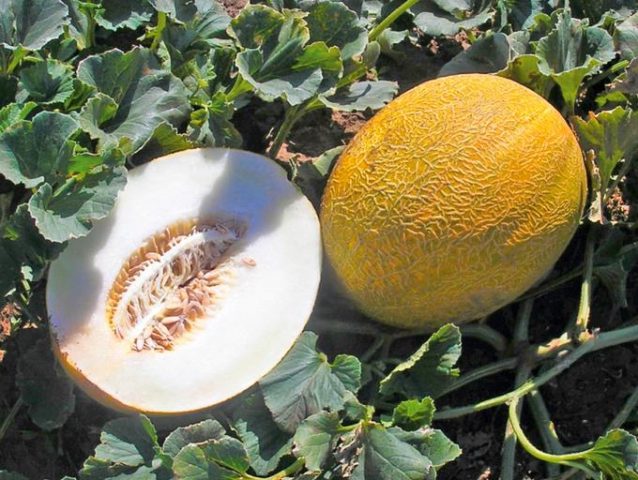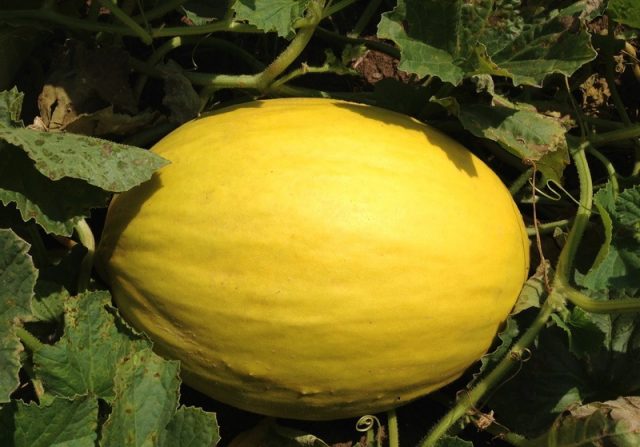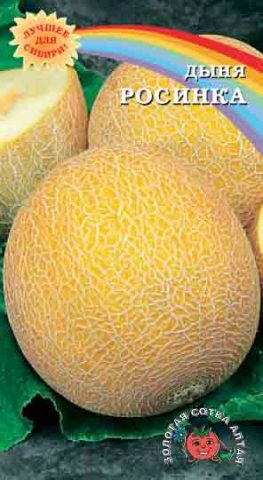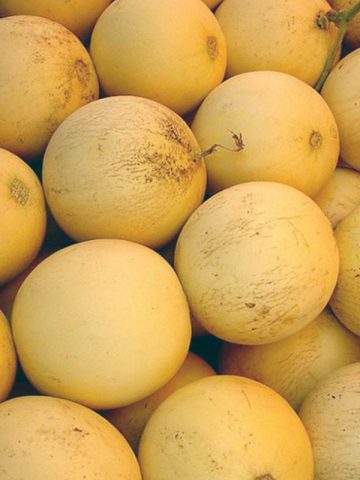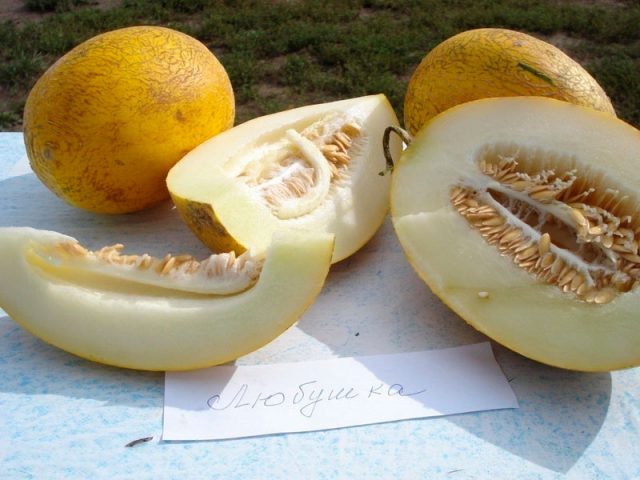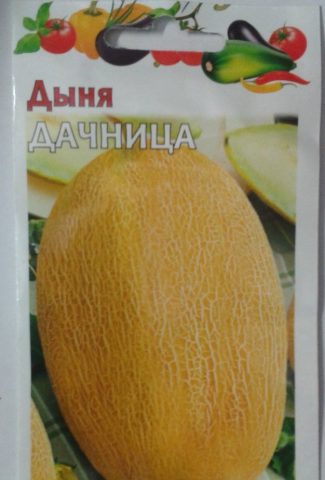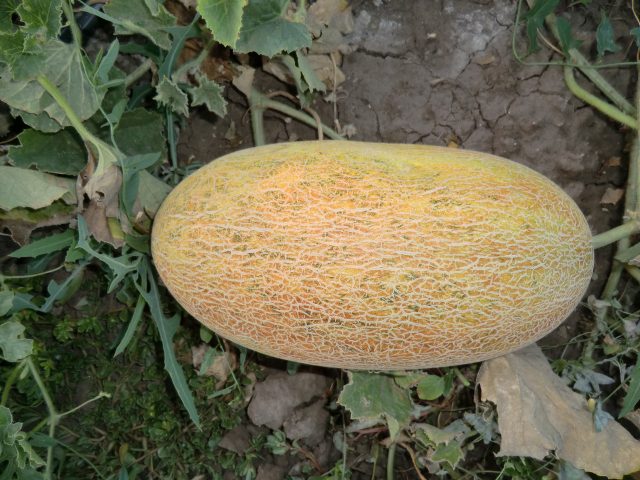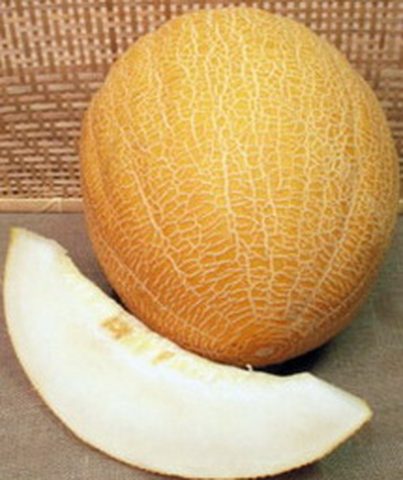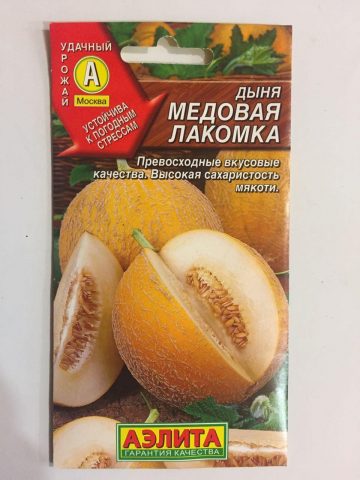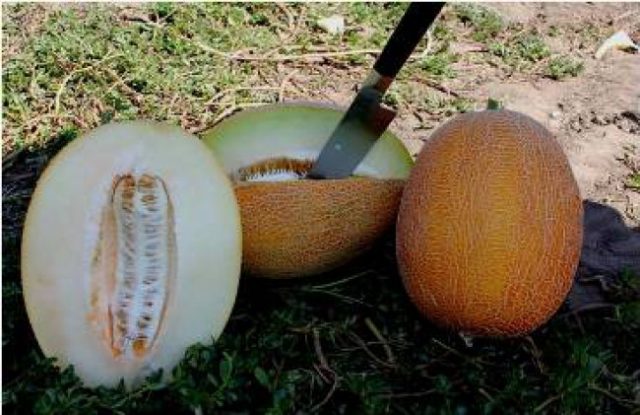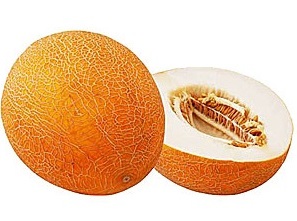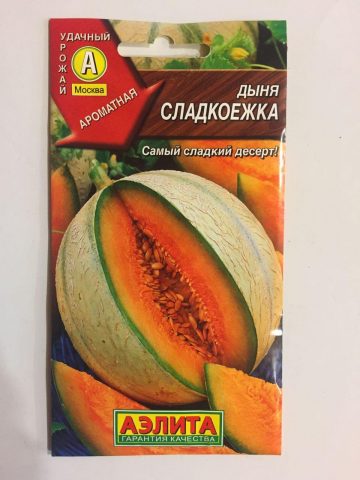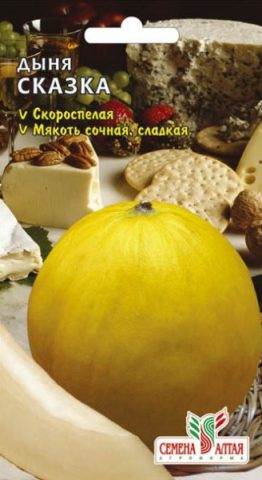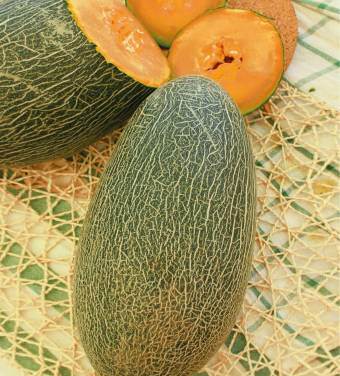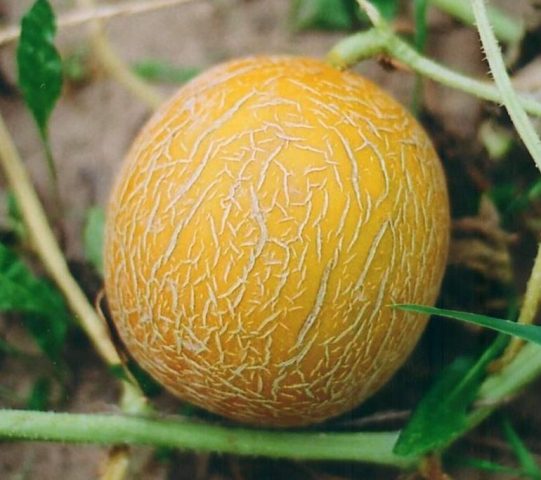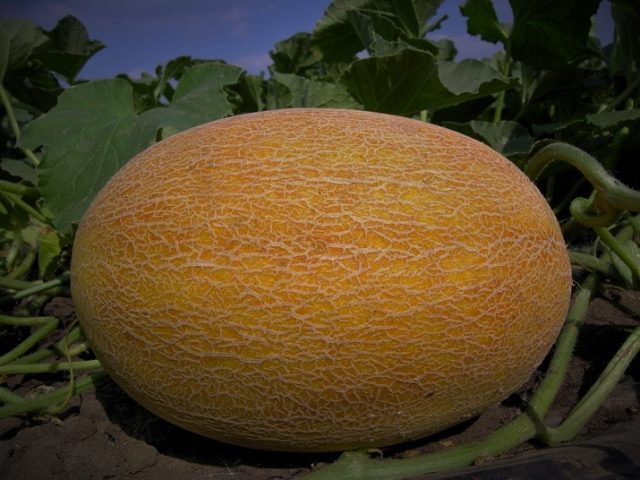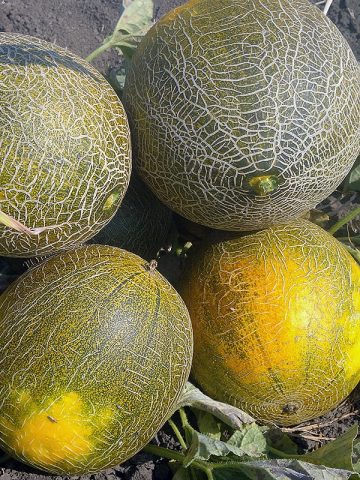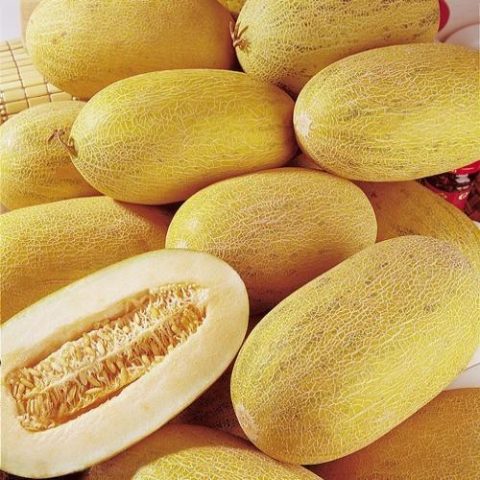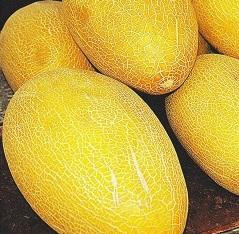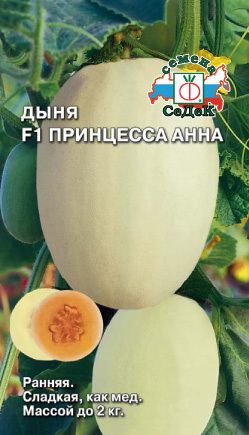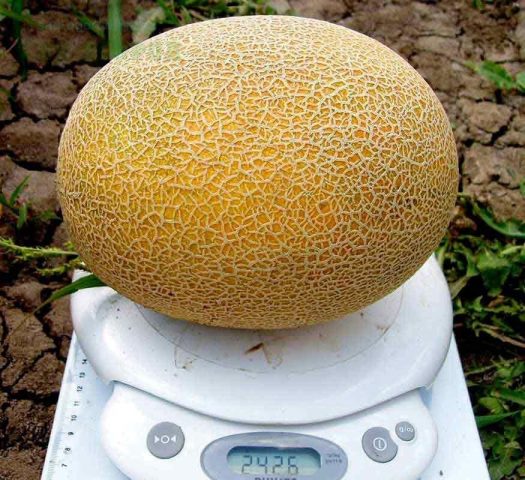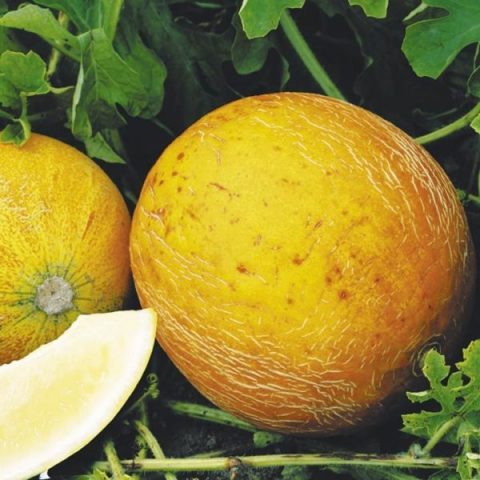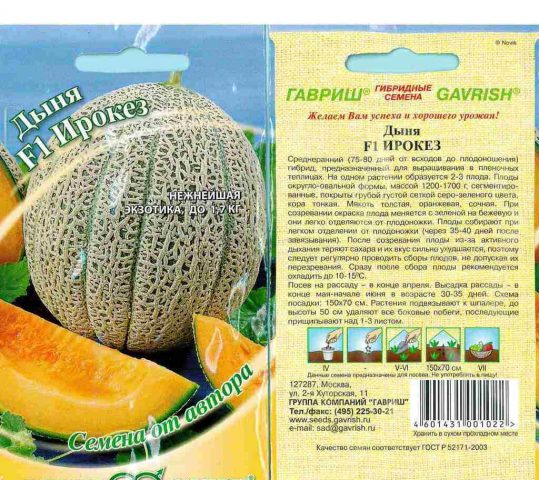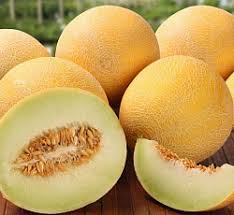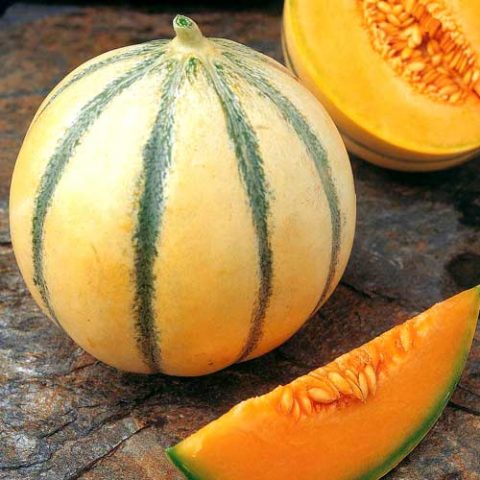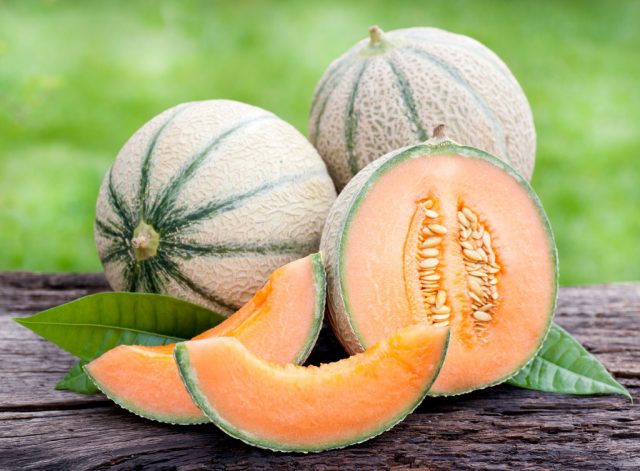Content
- 1 Melon varieties
- 2 Which variety of melon is better
- 3 Super early melon varieties
- 4 Early melon varieties
- 5 Mid-season melons
- 6 Late varieties of melons
- 7 The sweetest varieties of melons
- 8 The best melon varieties for greenhouses
- 9 Conclusion
Being the second most popular melon crop after watermelon, melon even takes the first place in the minds and taste preferences of many people. Because it has a delicate honey taste and unique aroma. Melon varieties are very numerous, only in Russia there are about 100 names. Even for the harsh conditions of the Urals and Siberia, breeders have so far developed many varieties that are capable of successfully bearing fruit, including in the open field.
Melon varieties
With all the varietal variety of melons, there are only two main subgroups into which all plants of this species are divided:
- classic or cultural;
- exotic.
For gastronomic purposes, representatives of only the first subgroup are of value. Since the second subgroup includes melons of the most diverse shapes and colors, their taste can be called neutral at best. And sometimes they are frankly sour or bitter. Most often, they are used either for medicinal purposes or as a basis for breeding work in order to breed cultural representatives with resistance to certain environmental properties.
The cultural group is also very numerous in its composition. Its fruits can be very diverse. They differ in color - they are yellow, orange, green, almost white, green-brown.
The pattern of the peel can also be quite varied. Many melon varieties have a smooth surface, others have a mesh pattern, and some have wrinkled or warty skin.
The shape can be round, oval, pear-shaped, or highly elongated. The size varies from several hundred grams to several tens of kilograms. Melon fruits are known, weighing 100 or more kilograms.
By origin, they are distinguished:
- Central Asian (Gulyabi, Ich-kzyl, Bukhara);
- Western European (Cantaloupe);
- Eastern European (Collective farm woman, Altai, Early);
- Asia Minor melon varieties (Kassaba).
Further in the article, various varieties of melons are presented with photos and descriptions of the features of their cultivation in different regions of Russia.
Which variety of melon is better
If you want to grow a melon in a particular region, choosing the right variety can be decisive for that crop. It is impossible to say unequivocally whether one melon variety will be better or worse than another. A lot depends on the climatic and weather conditions of the environment.
So many representatives of Asian melons, despite their unique sweetness and aroma, simply cannot bear fruit in other regions. Even if full and competent care is carried out for them, protecting them from diseases, pests and unfavorable environmental conditions, the wrong choice of variety will certainly affect fruiting.Plants can even grow and bear some kind of fruit, but it will be almost impossible to wait for that unique taste characteristic of them in their homeland. And the yield, most likely, will not correspond to the varietal characteristics.
But the fruits of zoned melons, although they will be smaller in size, may not be inferior to many southern varieties in sweetness and aroma.
What varieties of melons are best grown in the suburbs
To grow melon fruits that taste quite decent in the conditions of the Middle zone in general, in the Moscow region in particular, is a very real task. It is only necessary to remember two main conditions, the fulfillment of which will inevitably lead to the set goal:
- adherence to proper agricultural practices;
- selection of the most suitable variety.
It is the second task that will be discussed in detail in this chapter.
So, the melon grows well with an abundance of sunlight, sufficient heat, low humidity. Unfortunately, all these conditions are not always easy to comply with in the conditions of the Moscow region. Even if you grow fruits in greenhouses or greenhouses, the humidity in them sometimes reaches 90-100%. And for a melon, the upper moisture mark, at which it still feels good, is a figure of 60-65%. And high humidity produces, first of all, practically uncontrollable outbreaks of various fungal diseases.
Fortunately, breeders have bred many varieties and hybrids of melons, which are especially suited for the open field of the Moscow region. When choosing a suitable variety on your own, you should pay special attention to the following characteristics:
- increased shade tolerance;
- resistance to lack of heat and temperature extremes;
- short growing season, preferably up to 90 days;
- increased resistance to fungal diseases.
If there is a strong desire to grow late-ripening varieties with a growing season of more than 90 days, they must be grown using the seedling method.
Currently, many seed companies are engaged in the development of new varieties and hybrids of melons, adapted to growing conditions in the Middle Lane. When choosing varieties, you should also take a closer look at those of them that have variety testing stations in the region. Of the most famous companies that test their melon crops in the suburbs of Moscow, one can name "SeDeK" and "Gavrish". The best melon varieties, most suitable for growing in central Russia, are described below.
Alina
This early maturing variety was bred by the specialists of the Sedek company. Small, bright yellow oval-shaped fruits reach a weight of 1 kg. They ripen on average in 65-70 days and have a tender yellow-green flesh. The variety resists well a variety of weather conditions inherent in the weather conditions of the Middle Lane. The main advantage of Alina melon is its high complex resistance in relation to most diseases characteristic of melons.
Assol
This hybrid has rather long and powerful shoots. Fruits are medium-sized, round in shape. The rind is broken into pronounced yellowish-green segments separated by creamy gray stripes. There is also a fractured mesh pattern. The peel is thin, the juicy pulp is of medium thickness. The variety is mid-season, sweet taste, has a strong melon aroma. Disease resistance is good. Productivity - up to 10 kg / sq. m. Fruits can be stored for up to 8-10 days.
Collective farmer
One of the oldest and most popular varieties of melons throughout Russia. Rather, it belongs to the mid-season, since it takes about 90 days to fully ripen. Forms medium-sized round fruits, sometimes up to 1.5 kg in weight. The flesh of the melons is very juicy, buttery, with a pronounced aroma and full flavor. The fruits are suitable for transport and can be stored for up to 3 weeks.But plants are susceptible to some diseases, in particular, powdery mildew and anthracnose.
Princess elizabeth
A relatively new hybrid from the Sedek company is a plant that is highly adaptable to the difficult weather conditions of the Moscow region. Melons ripen in 60-70 days. Resistant to anthracnose and powdery mildew. They have a round shape with a smooth bright yellow skin and tender juicy pulp. By weight, they reach 1.5-1.6 kg. On one bush, up to 5-6 high-quality full-fledged fruits can ripen.
Princess Svetlana
Another representative of the "princess" family. Refers to mid-early hybrids, fruits can ripen from 70 to 90 days. Highly resistant to various unfavorable growth conditions, including various diseases. The variety is listed in the State Register and is recommended for cultivation even in the Northern and Northwestern regions of Russia. The fruit has an attractive whitish-cream color. The pulp is juicy, but has a dense, crunchy texture. The weight of one melon can reach 2 kg. The average yield is 6.5 kg / sq. m.
Tiger
This unique hybrid of melon was created by the specialists of the Gavrish company in 2012. It is zoned throughout Russia and, despite its exotic appearance, can be successfully grown in the Moscow region.
In terms of ripening, it can be attributed to early maturing. Tiger produces very small fruits, weighing 100-200 g. They are round in shape, with a smooth and thin skin without a mesh. The pattern on the peel looks very attractive - brownish spots of various shapes and sizes are scattered on a pale yellow background. The aroma of the fruit is not very intense. But the taste of white juicy pulp deserves the most positive characteristics. The yield under film shelters is about 4 kg / sq. m.
Golden
This variety is classified as mid-season, it needs almost 90 days to ripen. But in terms of taste and aroma, it may well compete with Asian melon varieties. The fruits can be round or slightly oval with an orange smooth peel without a pattern. The mass of one melon reaches 1 kg. Well transported and kept cool for up to 3 weeks. Shows excellent disease resistance.
The best melon varieties for the Urals
The Ural region, especially its southern part, is characterized by more stable weather conditions than the Moscow region. Although summer comes a little later there, it can be hotter and drier. Therefore, for the Urals, there are several zoned varieties of melon, which do not ripen at the earliest. But when using the seedling method and film shelters, they can please with abundant fruiting and excellent taste and aromas of fruits.
Cinderella
This variety, created more than 10 years ago, due to its early maturity, conquered the vastness of almost all of Russia. The fruits are able to ripen in 60-70 days from the moment of emergence. Melon variety with a classic yellow shade. Oval-shaped fruits grow up to 1.2 to 2.2 kg. The sugar content can reach 9.3%, which is very good for such an early variety. Cinderella shows resistance to both low and high air temperatures. Cannot be transported, but can be stored for up to 15 days under suitable conditions.
Orange
Another completely new early ripe melon variety, which is recommended for cultivation in all regions of Russia. The fruits, although small (up to 600 g), have excellent taste characteristics. Melons are round, light yellow with a fine mesh on the surface of the rind. The pulp is yellowish-whitish, crumbly. The yield is small - up to 1.5 kg / sq. m. The variety is resistant to all unfavorable conditions.
Lesya
The variety is mid-season, zoned for the Ural region. The oval fruits are yellow-green in color. The rind is covered with a mesh of medium thickness. The melon can weigh up to 2.6 kg.The pulp is sweet, has a rather thick layer, tender and oily with a pronounced melon aroma. Well transported. The variety is resistant to fusarium and powdery mildew.
Temryuchanka
This mid-season variety is distinguished by its special endurance and resistance to stressful conditions. This is probably why it is zoned for the Ural region, despite the fact that it was bred in the Krasnodar Territory. Fruits are of a standard oval-round shape. There is a solid, thick mesh on the peel. Juicy and sweet pulp occupies most of the fruit space, the seed nest is small. The fruits can weigh up to 2.2 kg. In terms of productivity, Temryuchanka surpasses such varieties as Zolotistaya and Kazachka. It is well stored (up to 30 days) and transported.
Babor
This melon hybrid, despite its French origin, is zoned in several Russian regions, including the Urals. In terms of ripening, it occupies an intermediate position between mid-ripening and mid-late melons. Melons ripen between 68 and 100 days after germination.
Yellow fruits have an oval shape with a slightly wrinkled skin and can reach a mass of 4 kg. The pulp has a creamy hue, the sugar content in the fruits is average, about 5-6%. The variety is resistant to fusarium and can last up to 60 days after harvest.
The best melon varieties for Siberia
The Siberian region is characterized, first of all, by a short summer period. Although the average temperature level may even exceed the same in the Middle lane. Therefore, it is extremely important for Siberia to use early ripening varieties of melons and those that were specially bred for this region.
Altai
One of the oldest melon varieties, bred back in 1937 specifically for Siberian conditions and officially released in the Urals, in Western and Eastern Siberia in 1955. Altai is distinguished by early maturity - the fruits ripen after 65-75 days of growing season. The variety has beautiful, elongated-oval, yellowish fruits that weigh from 0.8 to 1.5 kg. At the same time, the pulp is very aromatic, has a pale orange color, but not very sweet.
The variety can be consumed mainly fresh, since it is poorly stored and transported. The yield is quite decent - up to 25 t / ha.
Dewdrop
The variety is also bred specifically for Siberia. Differs in early maturity (58-65 days of growing season) and good yield (up to 27 t / ha). Plants form short strings. The smooth, light yellow fruits of this melon are round in shape. Fruit size is small (600-800 g). The pulp is not very juicy and tender, but the taste is quite good, and the aroma is strong, melon.
Lolita
This variety was bred in the Astrakhan region, but zoned for the East Siberian region. Rounded beige-yellow fruits with a mesh pattern on the peel ripen 66-75 days after germination. They have a moderate aroma, but the taste is already close to the reference. This is due to the high sugar content (up to 7.8%) and the tender pulp that melts in the mouth. By weight, the fruits reach 1.5-2 kg. In terms of productivity, Lolita slightly surpasses the Kolkhoz woman, which can also be grown in this region.
Lyubushka
The variety is classified as ultra-ripening. When sowing dry seeds in the ground in the last days of May, the first ripe fruits can be harvested from the second half of August. Moreover, the yield of Lyubushka can be up to 7-8 fruits per plant. When grown without watering, on average, the fruits grow up to 800 g. Melons have an intense yellow skin color, practically without a net, greenish flesh and excellent taste.
Amber
This variety was also bred specifically for Siberia. Despite the fact that it has an average ripening period (about 75-80 days), the taste of the fruit deserves to tinker with the seedlings.
Summer resident
This relatively new melon hybrid was bred by the specialists of the Gavrish company and recommended for cultivation throughout Russia. It is classified as early maturing - it ripens in 60-75 days of growing season. The fruits are oval in shape with some barely noticeable pattern on the yellowish peel. By weight, they grow up to 1.5 kg. With a greenish tint, the pulp is tender, crumbly and has a good taste. The yield under the film can reach 5 kg / sq. m.
Super early melon varieties
In general, early melon varieties include those that are capable of bearing ripe fruits after 60-65 days of growing season. But selection does not stand still, and in recent decades, the so-called ultra-early ripening melons have appeared, the ripening of which is possible even in an even shorter period. They are the ones that will be discussed in this chapter.
Barnaulka
Barnaulka or Barnaulskaya is a rather old melon variety that was bred in the last century. Its main advantage is its amazing early maturity. The fruits ripen within 45 days after the first shoots. They have an elongated shape with a skin without a yellowish tint. Fruit weight reaches 1.5 kg.
Melba
Another super-early variety, whose producers claim that ripe melons can be obtained in 30-40 days of growing season. True, the fruits are small in size, weighing about 600 g. The shape is oval, the skin is light beige with a net. Good taste.
Sybarite's dream
An interesting, fairly new variety of Japanese melon breeding. The seeds can also be sold under the name "Bummer's Dream". The fruits ripen in 50-55 days. In Western countries, this variety is often called apple melon because of the juicy, sweet and crispy white flesh. The aroma of the fruits is delicate, honey.
The skin is very thin and smooth so that the fruit can be eaten with it. They have a somewhat non-standard pear-shaped shape and an unusual color: light with dark green spots.
Fruit weight is small: from 200 to 400 g. From 15 to 20 melons ripen on one plant per season. The variety is resistant to diseases and pests.
Fiona
A fairly new hybrid of Lithuanian breeding melon. But at the same time, already in 2017, it was entered into the State Register of Russia and recommended for cultivation throughout Russia. The fruits ripen from 50 to 60 days from the start of the growing season. They are oval in shape and have a delicate, rather sweet taste. Melon weight reaches 1.7 kg, they are well stored (up to 60 days) and are well transported. Productivity - up to 2.5 kg / sq. m.
Early melon varieties
Perhaps one of the most common groups of melons, sometimes called Russian early ripening. Their vegetation period ranges from 60 to 80 days. They usually have low yields, medium-sized fruits and are practically not stored or transported. These are melons for local instant consumption. But they begin to ripen, when grown by seedlings, already from the end of July or from the beginning of August.
Dune
A good reliable variety with very tasty and aromatic fruits, despite their early ripening (58-75 days). By weight, the fruits reach 1.7 kg. This melon variety has a slightly oval orange fruit with a pronounced solid mesh. The pulp is firm, but juicy and tender at the same time. For its ripening period, the variety has a good yield and is quite transportable.
Honey gourmet
It has a fairly average performance in all respects. A typical representative of the group of early maturing melons. Bred by breeders of the company "Aelita" in 2015.
Myron
An early ripe hybrid of Israeli selection. Among all the early varieties, the melon is striking in the size of its egg-shaped fruits. They can reach 2.5-2.9 kg. And at the same time, fruits of this size ripen in just 55 -70 days. And the taste of Miron is also on top. They contain up to 6.8% sugars. Fruits are stored for about 10 days.The hybrid shows good resistance to weather conditions, including heat and flooding.
Pineapple
This variety is practically the counterpart of one of the Asian melons of the same name. The difference between them is only in size and ripening time. Pineapple (European) does not gain more than 2 kg in weight, but it has time to ripen in just 65-70 days. And in the taste of its fruits, you can really feel some exotic notes, reminiscent of pineapple.
It is also resistant to powdery mildew and anthracnose.
Sweet tooth
This variety is a typical green melon. The fruits have an oval-elliptical shape and a green skin with a grayish tinge. The rind is also speckled with a thick and thick mesh pattern. The fruits grow small, up to 1.2 kg. The pulp is very beautiful, orange in color. The density and juiciness of the fruits are average. Good taste. The yield is very small - about 1 kg / sq. m. But melons are well preserved (up to 25 days) and transported.
Sherante
An early ripe French variety is very similar in appearance to cantaloupe. Rounded gray fruits in color have pronounced lobes, the borders of which are outlined in a dark green tint. The orange rather dense pulp has a good sweet taste and not a very pronounced aroma.
Story
An early melon variety is quite suitable for growing, both in open ground and under film shelters. The fruits ripen quite amicably in 62-65 days. Melons show subtle segmentation. The pulp is very juicy and crunchy and contains up to 10% sugar. The aroma is weak. Productivity - up to 2.3 kg / sq. m. The fruits are not stable and not transportable. But they are resistant to powdery mildew and peronosporosis.
Mid-season melons
Melon varieties of medium ripening are sometimes also called summer varieties. Although their ripening period most often falls at the very end of summer and September. They are often distinguished by higher yields, dense and more sugary flesh compared to earlier varieties. In addition, they have a harder skin and are therefore better suited for storage and transportation.
Lada
A fairly common melon variety for industrial cultivation, especially in the southern regions. Ripens in 78 to 92 days. Fruit weight is not very large, on average up to 2 kg. But when normalizing the fruit, it can be more than 3 kg. The yellow, rounded fruits have a light juicy and sweet pulp with a sugar content of more than 8%. Lada is resistant to many diseases and practically does not crack during the damp summer. Average yield, up to 2-3 kg / sq. m.
Ethiopian
Another very popular variety of melon among gardeners in different regions. The color is yellow-orange with pronounced segments separated by light gray stripes. Melons reach a mass of 2.8 kg. Juicy and tender pulp has a bright orange hue and honey taste. The fruit has a strong melon aroma. Ethiopian is good for hot growing conditions.
Augustine
Melon hybrid of English selection, which ripens approximately 70-85 days after germination. Melons have a regular elliptical shape and a pronounced dense mesh on the surface. Resistant to sunburn and cracking. Good taste is combined with good yield and transportability.
Caramel
A completely new hybrid from the Sedek company, which combines the best qualities of its predecessors. Melons ripen in about 80 days, although they are rather large - up to 3 kg and are well stored (up to 18-20 days). The pulp is juicy, crispy, sweet and quite extensive in size. The yield reaches 5 kg / sq. m.
Kazachka 244
Despite the relative antiquity of the variety (it was bred and recorded in the State Register of Russia back in 1964), the melon is still very popular among gardeners. After all, it combines a fairly high yield (up to 28 t / ha) with good taste, excellent keeping quality and transportability.In addition, the variety manages to withstand a variety of diseases well.
Late varieties of melons
These melon varieties have excellent storage properties and, as a rule, have the highest sugar content. But their long growing season practically does not allow them to be grown anywhere except in the southern regions. However, some varieties can be plucked unripe, and they ripen well in indoor conditions, on window sills.
Wintering
A variety of melon with a name that suggests that its fruits are perfectly preserved in winter. Wintering is not in vain zoned in the Ural region. Its not too long growing season (85-92 days) allows it to be grown through seedlings even in the Urals.
Bushes grow quite powerful, climbing. Oval fruits reach a weight of 2.5 kg. The pulp is light green in color with a sugar content of 8-9%. There is a coarse coarse mesh on the peel. The fruit retains its high taste properties for 3.5 months after being harvested. Wintering is distinguished by a stable yield of leveled fruits.
Slavia
A late-ripening melon variety (82-111 days) with high taste, good yield (30 t / ha) and resistance to growing conditions. It is not stored too long for late varieties (about 30 days), but it is well transported.
Honey giant
This unique variety, although it has a long growing season (over 100 days), is well-ripened at home and has an excellent melon aroma. The latter is not very typical for late varieties. Therefore, giant honeydew melon is often grown even in the Moscow region.
Torpedo
Plants will be able to produce tasty and large fruits only in suitable conditions, with an abundance of light and warmth. In addition, they need at least 112-115 days to mature. But they are perfectly preserved for more than 3 months after collection. The weight of one melon can vary from 4 to 8 kg.
Gulyabi or Chardzhuyskaya
This melon variety from Central Asia is distinguished by its excellent taste and long shelf life. Large oblong fruits (weighing up to 7-8 kg) can easily be stored in a cool room until March inclusive. Moreover, their taste is fully manifested only a month after the harvest. These melons ripen only on 130-135 days of vegetation and their cultivation is possible only in the southernmost regions of Russia.
The sweetest varieties of melons
The sugar content of sweet melons can be well over 10%. It is not for nothing that the taste of these melons is often compared to the sweetness of honey.
A pineapple
Sometimes this variety is also called Sweet Pineapple. Its growing season is about 95 days. The melons grow up to 3 kg and have a very sweet, buttery flesh with some pineapple flavor. It tolerates diseases well. Storage and transportation is possible within 2-3 weeks.
Amal
This French-bred hybrid does not take very long to mature, only 78-80 days. Melons have a very regular and beautiful rounded-oval shape and weigh up to 3 kg. The pulp is very aromatic and sweet, with an orange-pinkish tinge. The hybrid is resistant to many diseases. The yield is average, about 2.5 kg / sq. m. Well stored and transported.
Canary honey
This creation of the breeders of the Sedek company is distinguished by a relatively whimsical cultivation technique, but its really honey taste and aroma leave far behind all other varieties of melons of this company. Melons are small in size (up to 1.4 kg) and early ripening (60-65 days).
Princess anna
Among all the "princesses" this variety is the sweetest. The sugar content in it reaches 10%. In addition, it is distinguished by its early maturity, resistance to diseases and difficult weather conditions.
Caramel
A relatively early maturing (62-66 days) variety of French selection, the name of which already speaks of the sweetness of its fruits. The sugar content in them reaches 9.8%. Medium-sized fruits (1.4-2.4 kg) have a strong melon aroma. Resistant to fusarium and waterlogged soil. The yield is quite decent, up to 2.8 kg / sq. m.
Cappuccino
This melon, under favorable growing conditions, can show record levels of sugar content in fruits - up to 17%. Melons have a small size (up to 1 kg), a pleasant creamy peel and almost snow-white juicy pulp of unsurpassed taste and enchanting aroma. Fruits ripen 70-75 days after germination.
The best melon varieties for greenhouses
When choosing suitable melon varieties for cultivation in greenhouses, it is necessary to pay attention to the yield and compactness of the plants, as well as their resistance to fungal diseases.
Iroquois
This popular variety, bred by the breeders of the Gavrish company, can be classified as medium early (70-80 days of growing season). Plants are quite strong, but they can be allowed to curl along the trellis. The fruits are small (1.2-1.6 kg) with good taste characteristics. The yield can average 6-8 kg / sq. m.
Gold of the Scythians
A hybrid from the same breeders, which, in addition to high yields, has an excellent sweet taste of fruits. It also ripens quite early, 70-80 days after germination. It is also characterized by resistance to powdery mildew.
Extraordinary
Already in the very name of this melon, there are unusual features that characterize the appearance of the fruit. This is a variety of melon not only with a well-defined lobular structure, but also with a warty surface of its rind. Outwardly, the fruits are a bit like pumpkins. The weight can reach 3.5 kg. The flesh is an attractive dark orange shade. Average aroma, sweet taste. Moreover, the plants begin to bear fruit quite early - on the 60-65 day of the growing season. The yield is also good - up to 5.2 kg / sq. m.
Augen
Melon Ojen was born as a result of the efforts of Israeli breeders, but managed to take root in the Russian open spaces due to the compactness of the lashes, good yield (4-5 kg / sq. M) and relatively fast ripening (82-85 days). This melon variety is a cantaloupe variety with well-defined yellow-orange lobules and dark green edges. It is characterized by a strong melon aroma and sweet flesh, even when unripe. In open ground, it is still prone to rot of the base of the stems in cold and damp weather, but in greenhouses it feels great. Fruit weight - up to 1 kg.
Blondie
This hybrid is another representative of the cantaloupe melons that have recently appeared in the vastness of Russia. The melons themselves are not large, about 300-500 g. They practically do not have the usual melon aroma, but the taste of bright orange pulp is honey. From 1kv. m in a greenhouse, you can get up to 5-6 kg. In addition, the hybrid is resistant to the most common diseases of this species. It is better to harvest immediately after coloring the peel in a beige color, so that the fruits do not have time to overripe and acquire an unpleasant odor.
Conclusion
In Russian conditions, it is not possible to grow any varieties of melons known in nature. But those that are available are quite enough to enjoy the variety of colors, sizes and taste sensations from the fruits of this plant.
